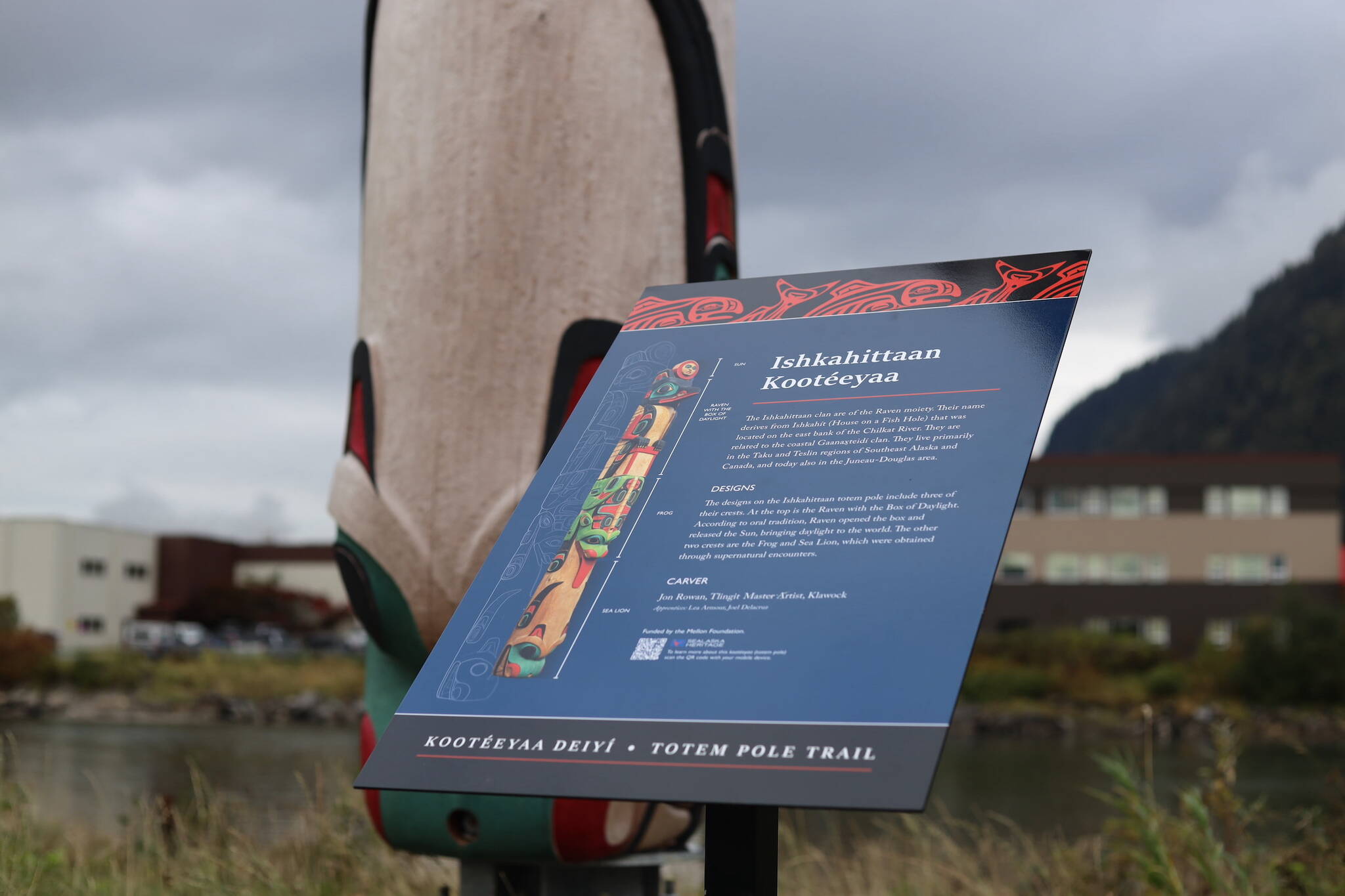New additions to Juneau’s downtown Kootéeyaa Deiyí, or Totem Pole Trail, were installed this week. Now each of the 12 poles raised this April is accompanied by a sign that explains the story behind each piece and its significance.
“Sharing our story can lead to the recognition of the value of cultural diversity,” said Sealaska Heritage President Rosita Worl in an email. “We hope that viewers will gain an appreciation of cultural differences and will become inquisitive to learn more about Native Peoples.”
Each of the 12 poles was carved by Tlingit, Haida and Tsimshian artists. Most of the artists spent more than six months creating the poles after being commissioned by the Sealaska Heritage Institute, which launched the Kootéeyaa Deiyí initiative in 2021 through a $2.9 million grant from the Mellon Foundation.
Information like the crests carved on the totem poles, the clans connected to the artist, and a brief summary of the story and meaning behind the crests are now included on each sign, said Ricardo Worl, communications director for SHI.
He said along with the information written, a QR code is also included on each sign which links to a website with the same information as the storyboard. Eventually, he said, SHI plans to expand the web content to include more educational materials about the trail and the artists, drone footage of each pole top to bottom, and a 20-minute video about the dedication ceremony that took place in April.
“We hope to educate the community and tourists that kootéeyaa are sacred objects, the crests embody the spirits of our ancestors meaning each pole has a spirit, so they are not to be touched, ridiculed or molested,” he said in an email response.
Rosita Worl said one of SHI’s goals is to promote cross-cultural understanding, which means sharing stories about Alaska Native culture and its survival through the thousands of years “despite the seemingly insurmountable environmental and climatic changes and the wholesale suppression of Tlingit, Haida, and Tsimshian cultures by extraneous forces.”
She said sharing these stories can also lead to further recognition of the value of cultural diversity in Juneau and the vibrancy of Indigenous cultures in Alaska.
The 12 poles currently raised are part of a larger vision for the trail. SHI hopes to raise a total of 30 totem poles along the Juneau waterfront.
Rosita Worl said movement toward adding the next 18 is already in the works.
“We are actively fundraising,” she said.
Information about each pole can be found on the SHI website at www.sealaskaheritage.org/institute.
• Contact reporter Clarise Larson at clarise.larson@juneauempire.com or (651) 528-1807.
.

